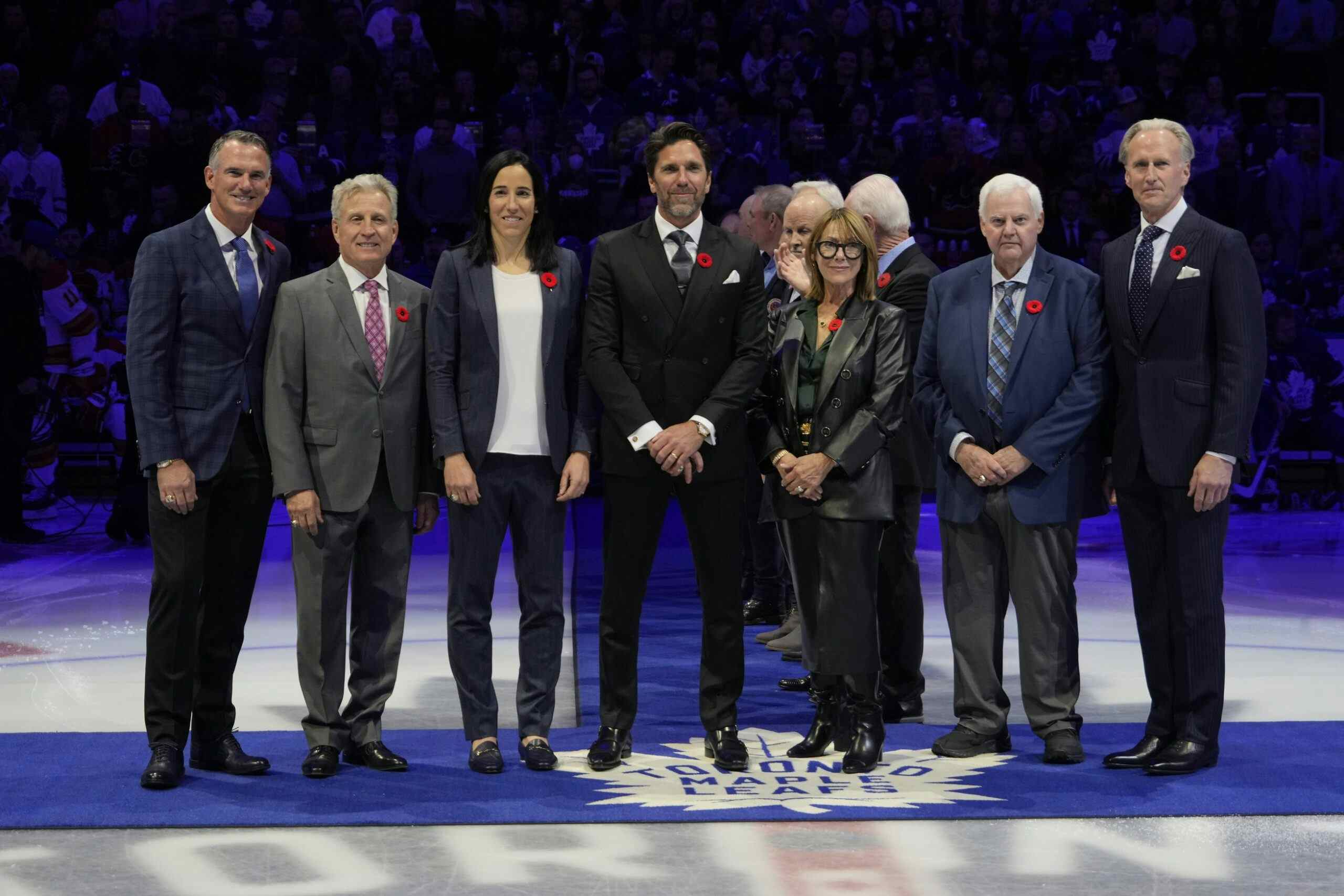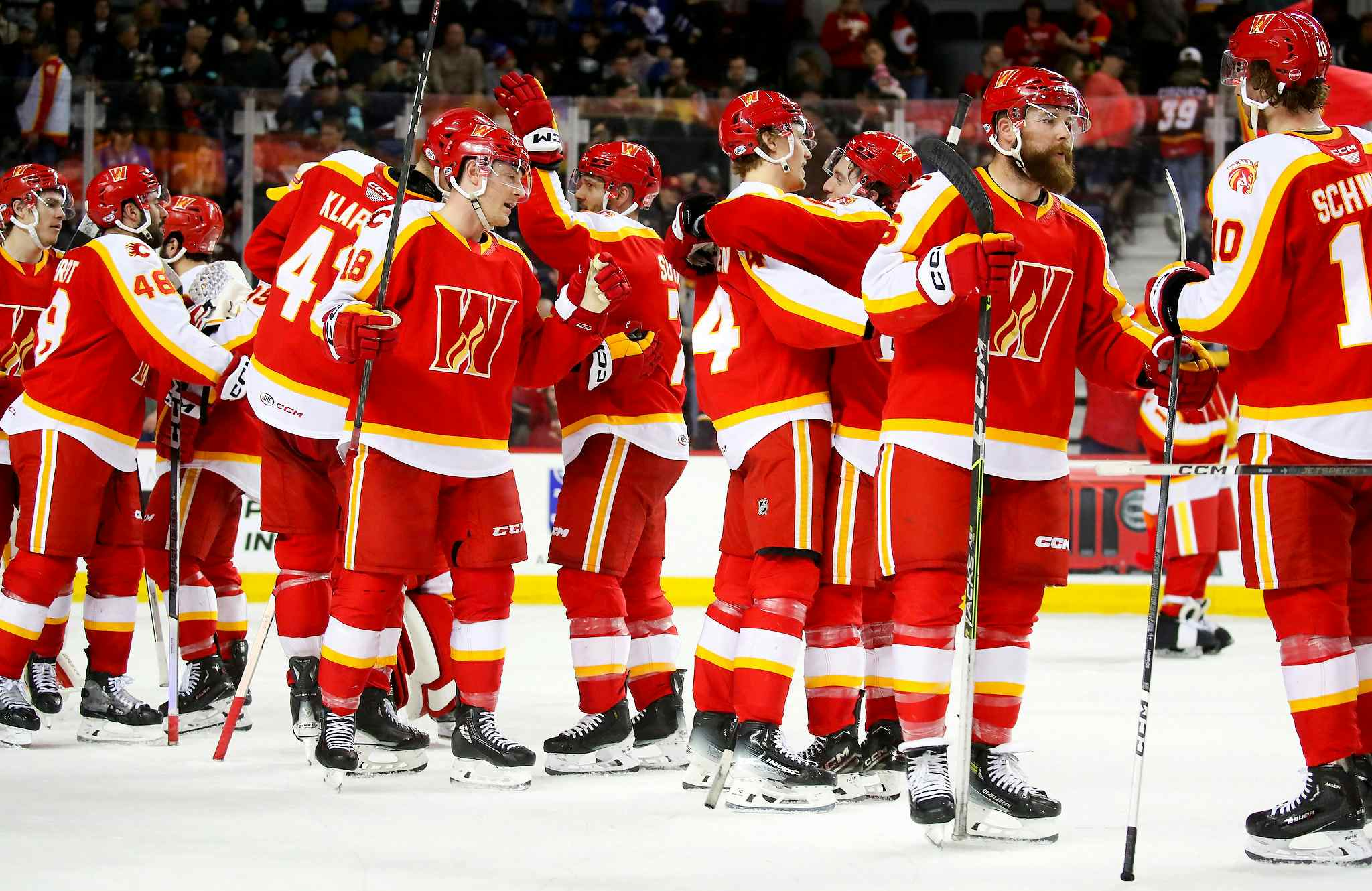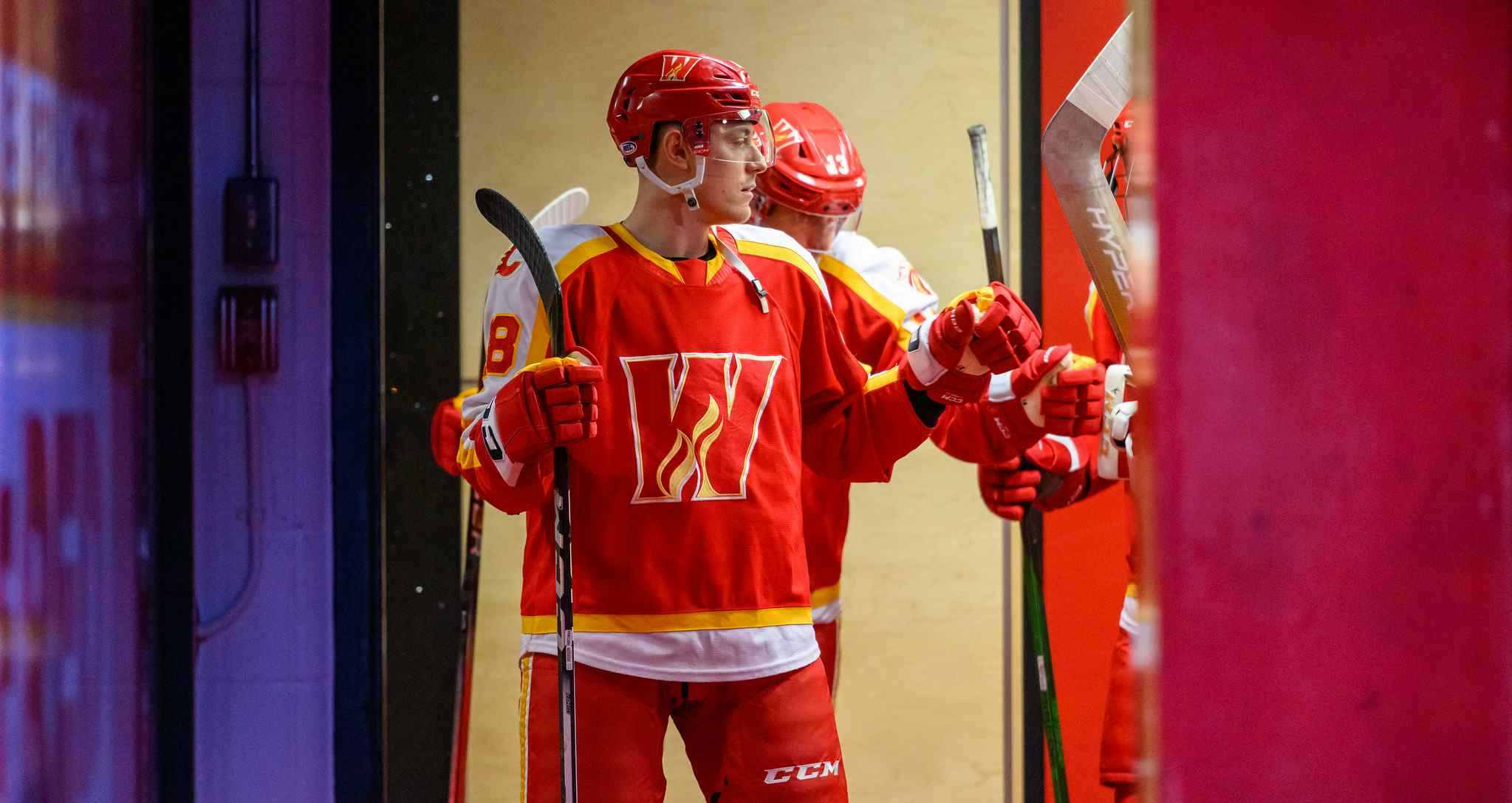Making sense of Calgary’s goaltending depth chart
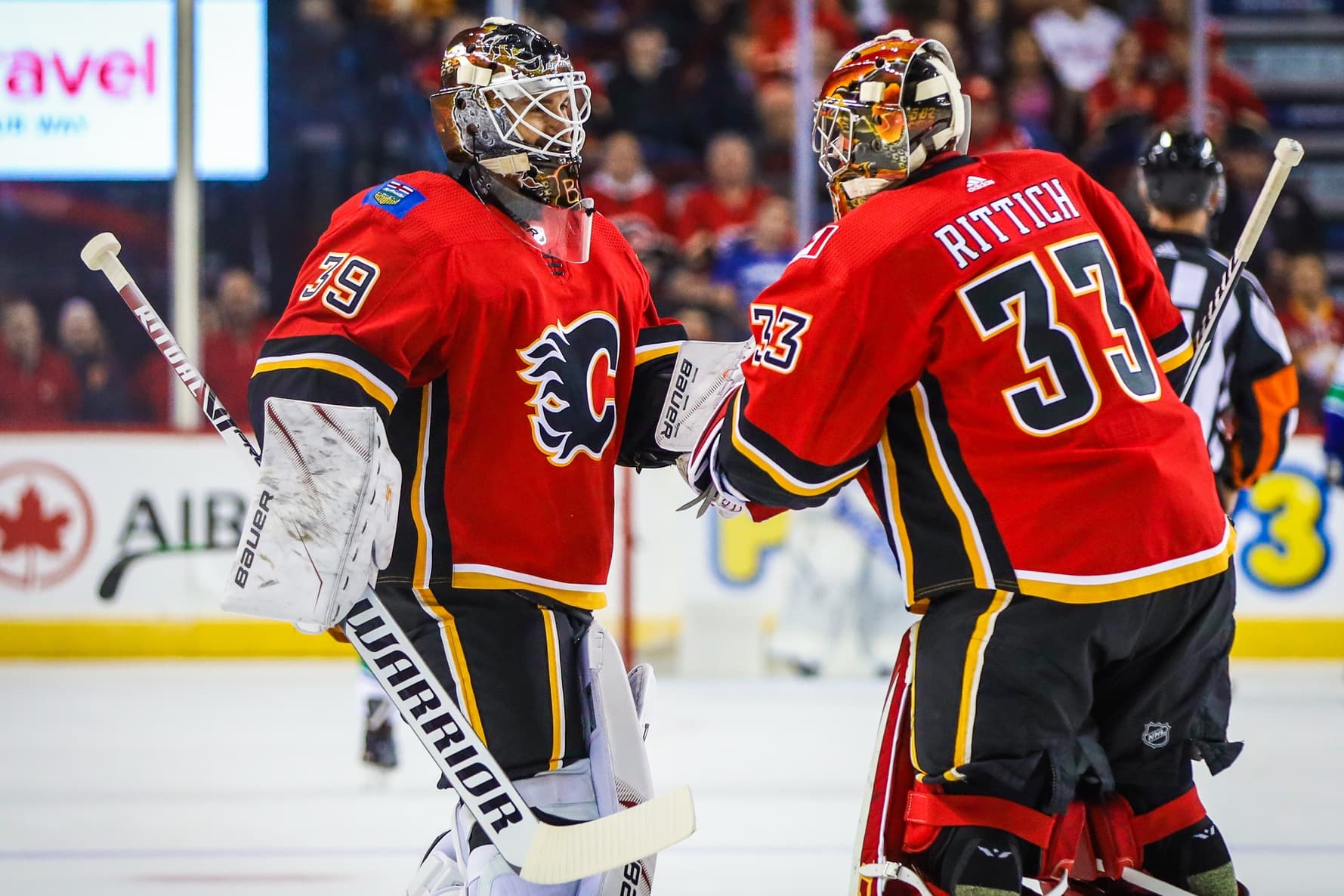
The Calgary Flames have a lot of goaltenders under contract right now, which isn’t necessarily a bad thing. Because goaltending is hockey’s most imperfect science, there’s nothing wrong with buying multiple lottery tickets. The downside, however, is a potential logjam at the minor league level, which can hamper development for everyone involved. So while it’s a good thing to cast a wide net, the numbers right now present some dilemmas.
In the NHL
This is the easy one, because there’s no questioning who the Flames are going with at the top level: David Rittich and Cam Talbot. It’s the first time in a few years the NHL tandem has been this obvious. 2018 training camp had moderate uncertainty with Rittich and Jon Gillies in the mix to be Mike Smith’s backup, while the year before saw Rittich and Gillies battling Eddie Lack for the number two gig.
Despite more certainty than in recent years, there are still a couple questions. First off, how is Calgary going to split time between Talbot and Rittich? As it stands right now, Rittich seems to be laying claim to top spot on the depth chart and will almost certainly get the start in the season opener in Denver. How it goes from there will be based on performance.
If Rittich consistently resembles the goalie he was for the first half of last season, he’ll get the bulk of the starts. And, while I’m optimistic Talbot can bounce back from a dreadful 2018-19 campaign, he still needs to prove it with results. Encouragingly, Talbot has been significantly better in each of his three preseason appearances and was very strong in two periods Thursday in San Jose.
The best case scenario, at least as I see it, is a 60-40 split between the two. That would see Rittich in the neighbourhood of 50 starts with Talbot coming in around 32. If things were to play out that way, it would likely mean both goaltenders are performing at a high enough level to stick to a general plan. What the Flames don’t want, however, is a week-by-week “hot or not” scenario that we’ve seen all too often in recent years.
The second unanswered question is a little more complicated. If one of Talbot or Rittich were to get hurt for an extended period of time, who would Calgary recall as a temporary backup? There’s a good chance that answer is different now than it was last season.
In the minors
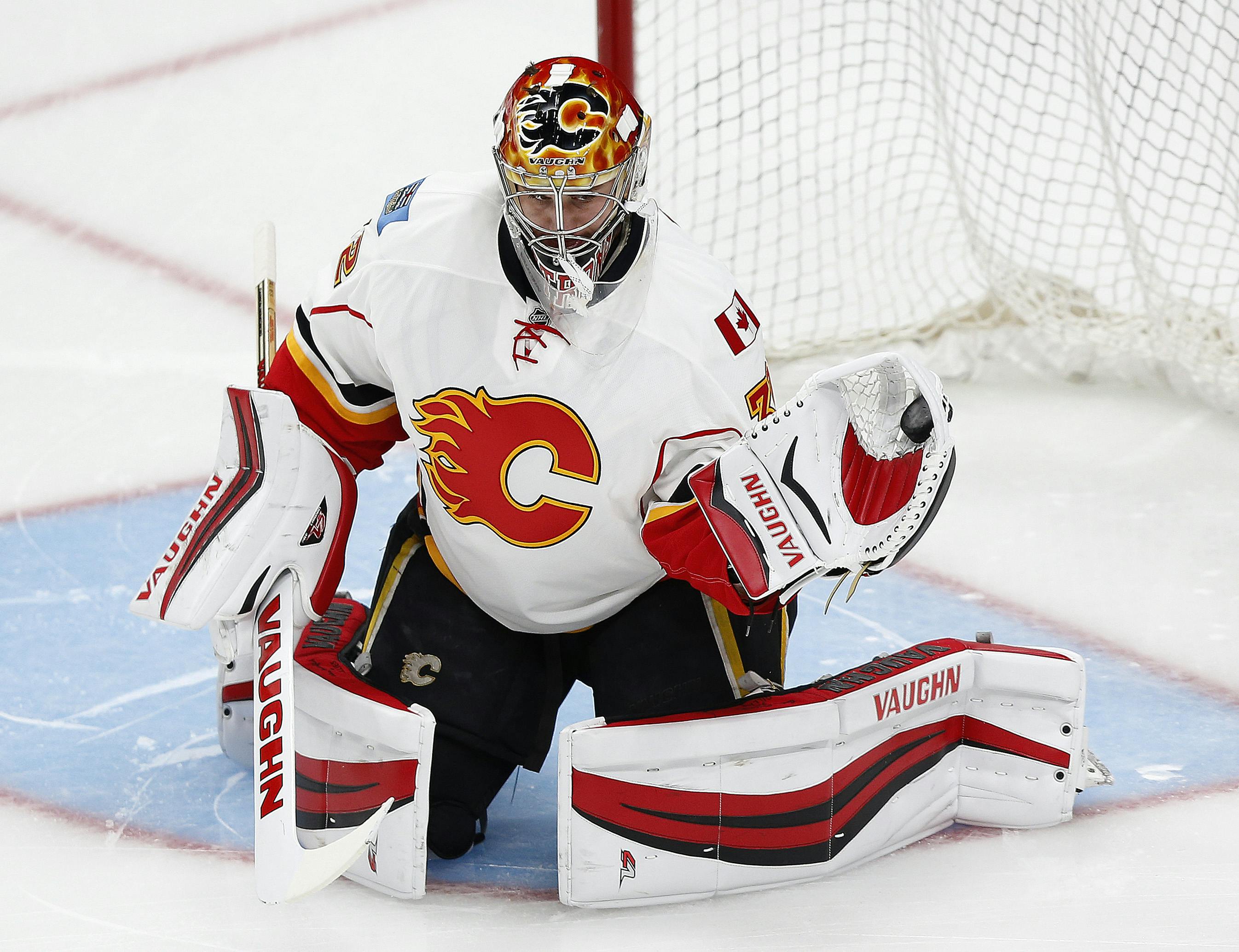
As early as last season, the answer to the last question would be the man above: Jon Gillies. I’m skeptical that would be the answer today. Gillies had a dreadful 2018-19 season with AHL Stockton and followed it up with a suspect preseason. As a result, the Flames waived Gillies on Thursday morning and assigned him to the Heat a day later.
You could make the argument newcomer Artyom Zagidulin has surpassed Gillies on the organizational depth chart. Calgary is excited about Zagidulin after a solid season with Magnitogorsk last year and an impressive training camp. It wouldn’t surprise me at all if Zagidulin were to be the team’s first recall in the event of an NHL injury.
Here’s the problem: the Flames have a traffic jam in Stockton, which can be partially illustrated below.
| Goalie | Team | Record | SV% | GAA |
| Jon Gillies | Stockton | 16-23-1 | 0.889 | 3.51 |
| Artyom Zagidulin | Magnitogorsk | 12-7-3 | 0.924 | 1.96 |
| Tyler Parsons | Stockton | 9-10-1 | 0.898 | 3.71 |
| Nick Schneider | Kansas City | 7-11-3 | 0.884 | 3.66 |
As it stands right now, Calgary doesn’t have an ideal way of handling all their minor league goalies. The Gillies situation makes things difficult, mainly because he hasn’t played well enough to spur on interest from other teams, either via trade or waiver claim. With Gillies back in the American League, it leaves the team with a difficult situation.
I think many of us are on the same page in believing Gillies is not long for the Flames organization. But while he’s still a part of it, the team is forced into a couple suboptimal scenarios: carry three goalies in the AHL, or send one of Parsons or Zagidulin to ECHL Kansas City.
Carrying three goalies in Stockton interferes with the development of both Zagidulin and Parsons, who should ideally be splitting time. Sending one of those two to the ECHL is problematic, too, mainly because Calgary allocates fewer resources at that level. As such, organizational prospects are left more to their own devices than they would be in the AHL, both on and off the ice.
Let’s put on our problem solving hat. Last I checked, the Flames were very much unsure of the best way to handle the situation, so let’s lay out their other options. Calgary could attempt to trade Gillies, loan him to another AHL team, or see if he’d be okay with playing in Europe. As of now, the first two options seem unlikely due to mediocre recent results from Gillies. The team might have to get Gillies playing, and playing well, for one of those doors to open.
The Europe option is intriguing and would probably be best case scenario, with one caveat: Gillies would have to be okay with it. It’s a win from a Flames perspective, as it would allow them to go forward with the ideal minor league plan. It’s a realistic option, too, because Gillies would be an upgrade on a lot of guys playing in most European leagues. Guessing whether or not Gillies would be open to playing overseas is a completely different story.
Fans in Calgary are rightfully consumed with fun stories right now. Who’s going to make the team? What is the opening night roster going to look like? The organizational goaltending conversation is a far less appealing conversation, but it’s still an important one. It’s also one that might not be going away.
Recent articles from Pat Steinberg

